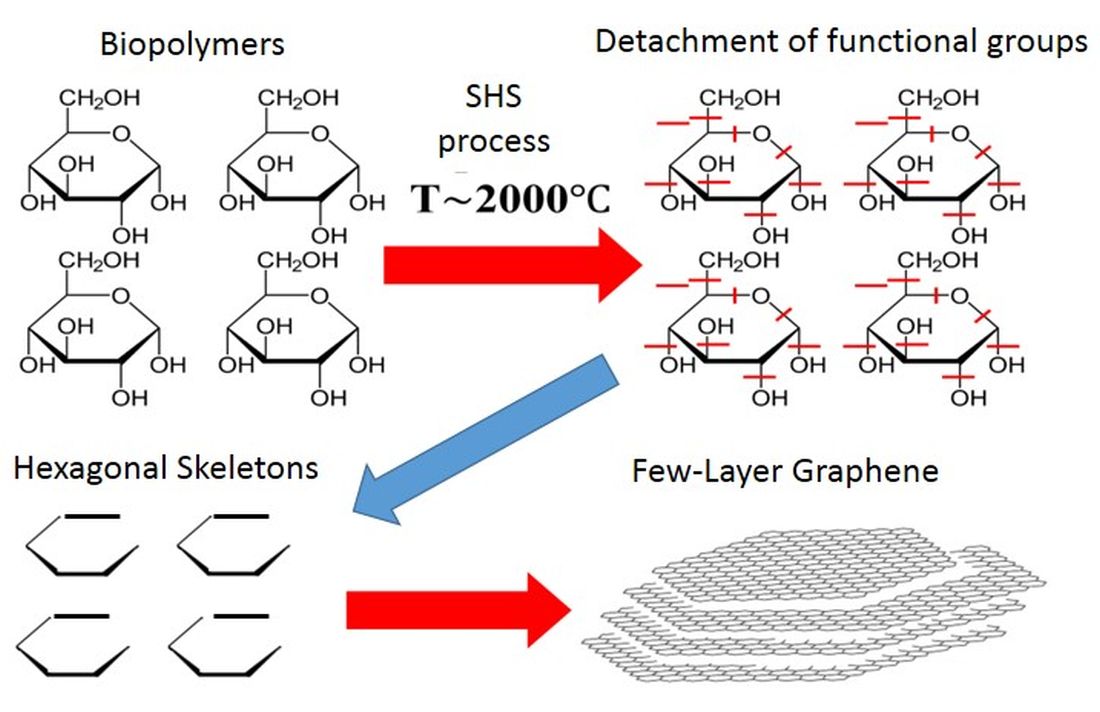For the first time, few-layer graphene (FLG) nanosheets were synthesized by the method of self-propagating high-temperature synthesis (SHS) from biopolymers (starch and lignin). We suggested that biopolymers (lignin, tree bark) and polysaccharides, in particular starch, could be an acceptable source of native cycles for the SHS process. The carbonization of biopolymers under the conditions of the SHS process was chosen as the basic method of synthesis. Chemical reactions, under the conditions of the SHS process, proceed according to a specific mechanism of nonsothermal branched-chain processes, which are characterized by the joint action of two fundamentally different process-accelerating factors - avalanche reproduction of active intermediate particles and self-heating. The method of obtaining FLG nanosheets included the thermal destruction of hydrocarbons in a mixture with an oxidizing agent. We used biopolymers as hydrocarbons and ammonium nitrate as an oxidizing agent. Thermal destruction was carried out in the mode of SHS, heating the mixture in a vessel at a speed of 20–30 oC/min to 150-200 oC and keeping at this temperature for 15–20 min with the discharge of excess gases into atmosphere. A combination of spectrometric research methods, supplemented by electron microscopy data, has shown that the particles of the carbonated product powder in their morphometric and physical parameters correspond to FLG nanosheets. An X-ray diffraction analysis of the indicated FLG nanosheets was carried out, which showed the absence of formations with a graphite crystal structure in the final material. The surface morphology was also studied and the features of the IR absorption of FLG nanosheets were analyzed. It is shown that the developed SHS method makes it possible to obtain FLG nanosheets with linear dimensions of tens of microns and a thickness of not more than 1-5 graphene layers (several graphene layers).

